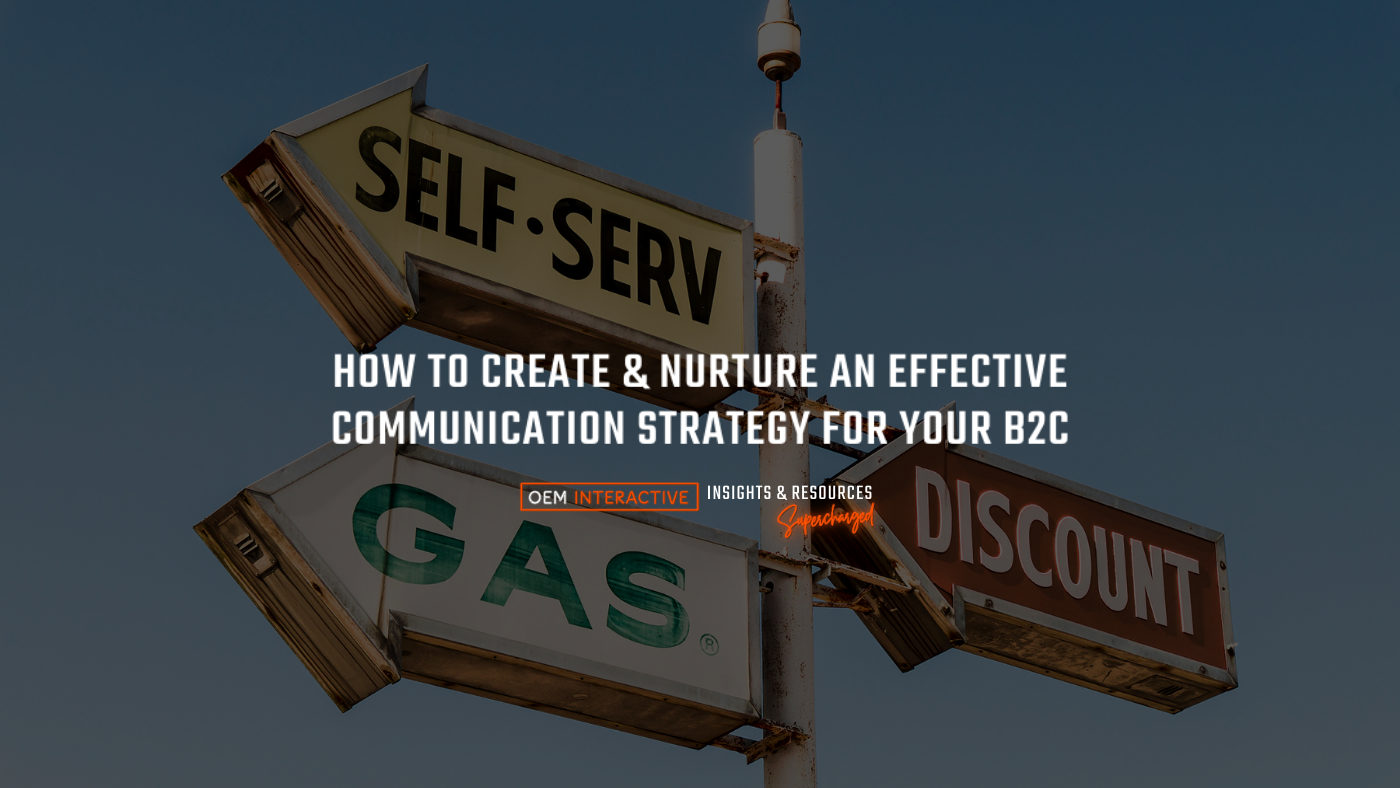The auto and parts market has quickly shifted toward ecommerce over the past several years, putting more pressure on parts departments to implement efficient and cost-effective direct-to-consumer shipping. Sending parts out to online buyers dramatically increases the size of your potential audience and introduces a new source of revenue for your department and dealership.
Unfortunately, setting up a successful parts ecommerce store can pose a major challenge for any dealership that’s interested in transitioning to online parts sales.
As a commodity vendor, you’re selling the same OEM parts that are available from countless other dealerships around the country. In order to differentiate yourself from the competition, you’ll need to stay ahead of them in terms of price, speed, shipping, and the overall customer experience.
Even if you make money on the sale price of each part, it’s easy to lose that money on the other end when you pay for shipping. Profit margins are substantially lower in ecommerce, so making sure that your shipping operations are running efficiently is vital.
When you’re selling products online, customers understand that you don’t have control over their order while it’s in the hands of the shipping carrier. With that being said, you still have the power to improve the buying experience and offer more transparency through open communication and regular updates.
Managing an increase in order volume while maintaining competitive prices, limiting your shipping costs, and providing a high standard of customer service can be extraordinarily complicated. Let’s take a look at the opportunities and challenges that come with direct-to-consumer shipping.

Why Implement Direct-to-Consumer Shipping?
While most auto parts purchases still happen on-premises, there’s no question that ecommerce sales are taking a greater market share every year. Departments that stick to in-person sales will find themselves facing a rapidly dwindling customer base with no easy way to make up the lost revenue. Direct-to-consumer shipping offers a few key benefits to parts departments in 2021 and beyond. If you’re only selling parts in-person, you’ve already limited your potential customers to those who live near your dealership. With more money being spent on parts through ecommerce channels every year, it’s easy to see why this isn’t a sustainable strategy. Once you implement direct-to-consumer shipping, your sales won’t be limited by the size of your storefront or the population in your area. You’ll be able to sell parts to customers around the US and take your department to the next level.The Challenges of Parts Ecommerce
Of course, none of this is to say that parts ecommerce is an easy market. Departments that start selling parts online will run into a few key obstacles.Margins
Most customers who walk into your store have a part in mind. While some savvy consumers may check prices online to find the best deal, the average lead isn’t going to leave just to buy the same product somewhere else. Ecommerce vendors lose that place utility and therefore face much greater downward pressure on prices. You won’t be able to maintain your in-person prices when you’re selling online, so you should expect lower margins on your ecommerce store. Competitive pricing is particularly important when you’re starting out with direct-to-consumer shipping. Customers aren’t familiar with your brand, so cutting prices can help you pull them from other vendors. On the other hand, you may be able to increase your prices over time as you build your audience and establish yourself as a reliable seller.Differentiation
Pricing isn’t the only thing consumers are concerned about when buying parts online. Internet users aren’t going to your dealership in particular—they’re typing in the part they need and then looking for the best options. Customers make purchasing decisions based on a number of factors including cost, branding, delivery time, and customer reviews. With so many parts ecommerce vendors out there, it can be difficult to find ways to differentiate yourself from other sellers.Shipping Efficiency
Adding direct-to-consumer shipping to your workflow may feel overwhelming if you’ve never sold parts online. You’ll need to oversee several new operations including packaging, shipping, comparing rates, and offering customer service to ecommerce buyers without taking away from in-person sales. While vendors often have the opportunity to increase prices after getting off the ground, increasing volume is a critical component for growth in ecommerce. Challenges related to shipping efficiency become even more complicated when you’re working at a larger scale.How to Optimize Your Approach to Direct-to-Consumer Shipping
Since OEM parts are commodities, inefficiencies in your shipping program can cut into your margins as well as your overall profits. Optimizing your practices will help you compete with other sellers while staying on top of every area of your workflow.Improve Your Packaging Processes
Packing, shipping, and fulfilling orders is a complicated process to add to your parts department. Fortunately, a few simple changes can help you get orders out the door more quickly while spending less money on each new shipment.Order Bulk Packing Materials
You probably don’t think of packaging as a major expense, but packing costs can add up quickly if you’re shipping a large volume of parts. Instead of picking up packing materials for each order that comes in, estimate how much you’ll need and put in a regular order at the beginning of each week or month. Don’t hesitate to talk to multiple sellers to compare prices, delivery options, and other factors.Assign Specific Boxes to Each Part
Having specific types of boxes on hand for each type of part you sell (in terms of general weights and dimensions) will make it easy to fulfill orders as you receive them. This will also help you cut down on shipping expenses since you will be prepared with the most cost-effective box for every unique part. For example, floor mats are generally around the same weight and dimension, so when you ship out floor mats, you can utilize the same type of box for the majority of your orders. Additionally, smaller items could be shipped out in flat rate boxes (like you see from USPS).Don’t Sell Inefficient Parts
Some parts departments put their entire inventory online, but this isn’t always the right decision. There’s nothing wrong with keeping heavy, bulky, and irregular parts off your website and only selling them to in-person customers—you should only offer parts that you can sell (and ship) for a worthwhile profit.Develop Branded Packaging
Acquiring customers is obviously critical for growth, but you also need to bring buyers back for multiple purchases. Keep in mind that brands often spend five times more to convert new leads compared to the cost of retaining their existing audience. Professionally branded packaging will help you stand out from other parts vendors and create a connection in the customer’s mind. From there, they’ll be that much more likely to come back for future purchases when they’re looking for another part.Look for Shipping Discounts
Shipping carriers advertise standard rates on their websites, but you don’t necessarily have to pay full price. Vendors that ship a higher volume can often access discounted rates from USPS, UPS, FedEx, and other major carriers. Other exclusive discounts may also be available through your shipping service provider (more on those later). With larger departments shipping out parts at a fraction of the typical cost for consumers, paying the standard rate for your shipments will put you at a significant disadvantage.Standardize Order Fulfillment
The best way to integrate shipping into your existing workflow is to develop a more consistent approach to order fulfillment. If business tends to be slower in the morning, that may be an ideal time to package and ship any outstanding orders. Designating a time and physical space for ecommerce orders makes things more predictable for you and your customers. If you fulfill orders from 9 AM until 1 PM, for example, you could post on your website that orders placed before noon will be processed same-day while orders placed in the afternoon will be processed on the following business day. Setting clear expectations upfront will help you avoid ambiguity and improve customer satisfaction.Hire a Shipping Manager
Shipping managers aren’t right for every department that sells parts online, but they can be incredibly helpful for departments that are struggling to scale their ecommerce sales. Without a dedicated shipping manager, you’ll have to rely on the rest of your staff to handle both online and in-person orders. A skilled shipping manager will help you find better rates from shipping carriers, match the perfect box to each part, and identify other inefficiencies in your workflow. They’ll also take pressure off the rest of your team and allow them to focus on the customer-facing side of your business. While your shipping manager will take the lead on order fulfillment, everyone on your team should know enough about the workflow to fill in as needed. Make sure that they’re familiar with your order fulfillment process along with the basic functions of your shipping service provider.Use a Third-Party Shipping Platform
Third-party shipping platforms are a powerful tool for any department with an ecommerce store. Shipstation, Shippo, ShippingEasy, and other top services streamline your shipping workflow while helping you save money at every step of the order fulfillment process. These are just a few of the ways in which a third-party shipping program can help your department reach its full potential:Import and Manage Orders
Keeping track of all your orders can be surprisingly tricky, especially if you’re selling parts on multiple ecommerce platforms. Third party shipping platforms like Shipstation allows subscribers to import sales from over 100 channels and view order information in a centralized interface. Once Shipstation receives order details, it will automatically let you know when you need to combine multiple orders into one or take a wide range of other actions. These order management features make dedicated shipping platforms indispensable for high-volume vendors.Quickly Compare Rates and Print Shipping Labels
Each carrier uses unique criteria to determine rates for various shipments, but comparing rates on your own takes too much time to be a practical option for most departments. With a dedicated comparison tool, you can quickly view shipping costs from every major carrier. After selecting a carrier for a given package or set of packages, you’ll be able to instantly print shipping labels in batches. Some programs even offer automatic generation for customs declarations and other types of paperwork. In short, you’ll be making the right decision for each shipment while spending a fraction of the time on these tedious administrative tasks.Configure Automatic Shipping Notifications
Most modern consumers are used to ordering from Amazon and other ecommerce giants. They expect the same responsiveness when buying from smaller vendors, and it’s difficult to offer that level of service without some assistance from a dedicated shipping platform. When an order makes it to the next stage of the delivery process, your provider will automatically send a shipping notification to the buyer’s preferred contact method. You can also direct them to a branded tracking page for more information about their order. Sending those notifications on your own would be a major headache and take time away from more important work.Focus on Customer Service
You’ll find it much easier to offer reliable customer service once you have your shipments under control. Efficient customer service is all about keeping buyers satisfied without letting their needs slow down the rest of your workflow. Here are some of the best ways to increase customer confidence and satisfaction in your direct-to-consumer workflow.Offer Transparent Shipping Information
No matter what your shipping policies are, visitors should see them on as many pages as possible. Surprise shipping costs are one of the most common motivations behind abandoned carts, so it’s critical to avoid imposing any unexpected fees during checkout. Transparent delivery timelines are also key for customer confidence when it comes to direct-to-consumer shipping. With COVID-19 and other factors impacting the supply chain, 85% of consumers now expect to see the expected delivery date before they commit to any purchase. Information about backorders and other shipping delays should be clearly displayed throughout your online store. Customers should also receive a delivery reminder in the order confirmation email so that they have something to reference later on.Give Customers More Options
Very few people spend time window shopping at online auto parts stores—when someone visits your website, it’s almost always because they need a part quickly. While some customers may be willing to wait a little longer to save money, others would rather pay extra to get what they need as soon as possible. If someone needs a part to get to work or to take their kids to school, they’re going to look for the store that offers the fastest delivery. On the other hand, someone who rarely uses their car will be looking for affordable shipping. The more options you can give your visitors, the fewer customers you’ll lose to other sites.Stay in Proactive Communication
Even if you do everything you can to provide accurate delivery estimates, there’s no way to eliminate the risk of an unexpected delay. The best way to minimize the impact of these surprise changes is to keep buyers updated at every stage of the order fulfillment process.Offer Free Shipping
Free shipping might sound bad for business, but the truth is that it’s one of the most reliable ways to optimize your sales strategy. In the age of Amazon, 79% of all consumers are motivated by the availability of free shipping. Keep in mind that free shipping doesn’t necessarily have to cost you money. Many ecommerce vendors simply roll the cost of shipping into the price of each item. Some consumers are more likely to buy a $50 item with free shipping compared to a $40 item that comes with a $10 shipping charge. Another option is to limit free shipping to orders that reach a certain minimum. The problem with this approach for parts departments is that the industry doesn’t revolve around impulse purchases. If you offer free shipping on orders of $50 or more, someone who needs a $30 part may not want to spend an extra $20 just to save money on shipping. However, if you offer accessories and/or swag such as t-shirts and hats, consumers are more likely to buy an additional item to receive the discount. As a direct-to-consumer vendor, your approach to shipping can make or break your profitability. Optimizing your shipping practices will help you become more efficient and most importantly, profitable. If you’d like help with optimizing your parts ecommerce shipping programs or would like help selling more parts and accessories online, we’d love to help! Contact us now to learn more about what OEM Interactive can do for your parts department.



